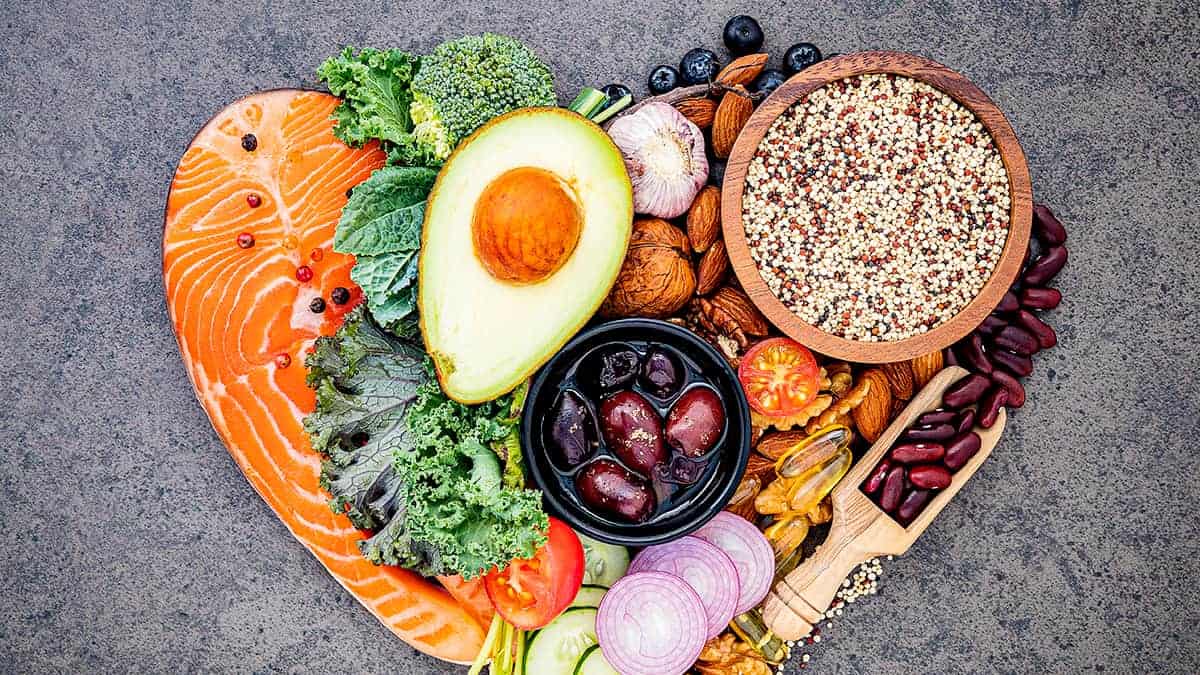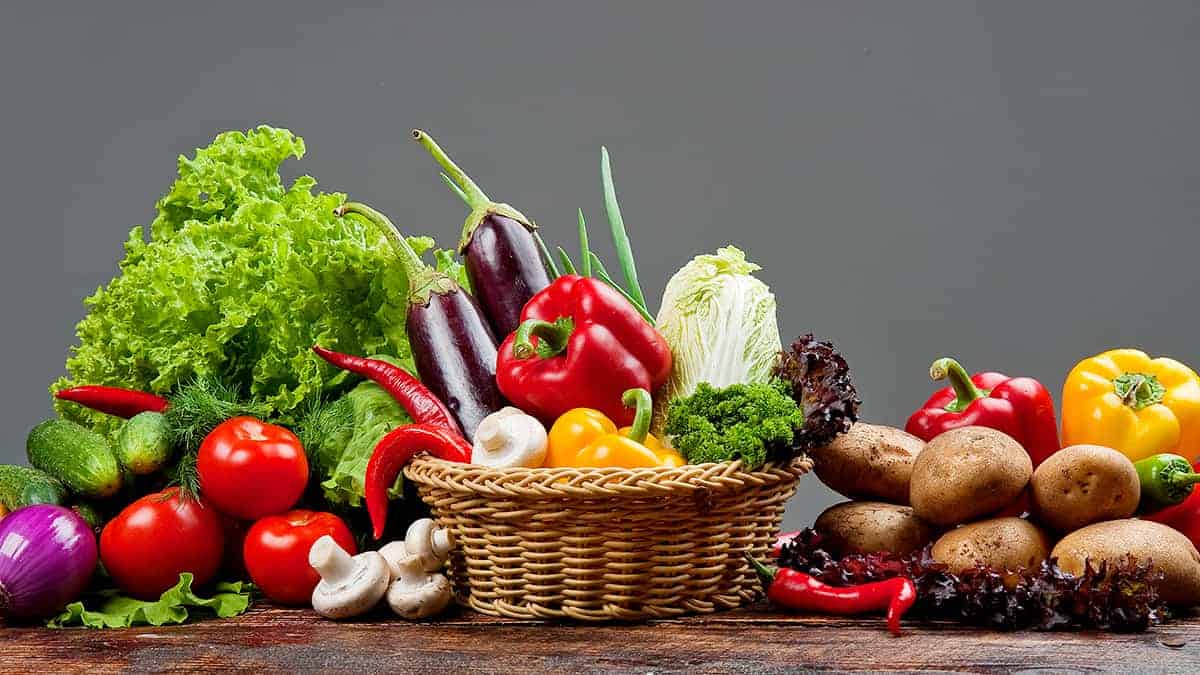In recent years, many people have become excited about superfoods that bring good health and help fight disease. Foods like blueberries, kale, and salmon have earned a reputation for being some of the healthiest foods out there. Here, I will explain why certain foods have earned the “superfoods” label.
What Is a Superfood?

Generally speaking, superfoods are foods that offer a lot of vitamins and minerals and provide positive health benefits. While all foods contain nutrients, some foods are much more packed with health-promoting nutrients than others.
There isn’t one standard scientific or nutritional definition that says which foods can be called superfoods. There isn’t a legal definition either, which means that companies can call any food they want a “superfood”. Many foods are labeled as “superfoods” simply for marketing purposes, and when companies say that a certain food or drink product is a miracle food, the actual science often doesn’t live up to the hype.
However, some foods certainly contain more health benefits than others. Learning more about how our bodies use the food we eat can help us make sure we’re meeting our nutritional needs. Labeling certain items as “superfoods” may help us better understand which foods can provide us with higher levels of health-promoting molecules.
Nutrients
Nutrients are molecules that the body needs in order to work properly. There are two types: macronutrients and micronutrients. Cells get energy from macronutrients and use these as building blocks in order to function and grow. Carbohydrates, fats, and proteins are all macronutrients. Micronutrients include vitamins and minerals.
There are some nutrients that your body can make for itself. Others need to be obtained from the things we eat and drink, and these are called “essential nutrients.” It’s important to get enough of these essential nutrients to keep yourself healthy. Eating superfoods can help you get high levels of many different types of nutrients.
Carbohydrates
Although many popular diets such as paleo and keto involve low-carb eating plans, some carbohydrates are necessary in order for your body to function properly. Your cells primarily get their energy from carbohydrates, making them an important source of fuel for your body.
There are three primary types of carbohydrates:
- Sugars are the basic building blocks of other types of carbohydrates. They are found in sweet foods like desserts, soda pop, and candy. Sugars are also found at high levels in processed foods and fast food. When people eat a lot of sugar, some is used for energy, and the extra is stored as fat within the body. Most superfoods have lower levels of sugar. Some superfoods, such as fruits and vegetables, have some naturally occurring sugars.
- Starches are made up of many different sugar molecules connected together. These molecules need to be broken down before the body uses them, so the body digests them more slowly. This leads to longer-lasting energy for the body and more feelings of fullness. Starches are found in products made from grains, such as bread and pasta. Some vegetables, like potatoes and corn, also have a lot of starch.
- Fiber can’t be completely broken down by the body. It leads to even stronger feelings of fullness. Fiber can support a healthy digestive system and reduce cholesterol and blood sugar levels. Many superfoods such as vegetables, fruit, beans, and whole grains contain high levels of fiber.
One way to get the carbohydrates you need using superfoods is by eating a lot of fresh vegetables and fruits. Additionally, some people consider whole grains to be superfoods. Whole grains are less processed, so they have more health benefits such as extra vitamins, minerals, and fiber. Whole wheat bread and pasta, brown rice, oatmeal, and quinoa are all types of whole grains.
Fats
Like carbohydrates, fats supply your cells with energy. They also have several other roles within your body:
- Helping your body stockpile and use certain vitamins and minerals
- Supporting skin and hair health
- Developing a healthy brain
- Supporting healthy inflammation levels
- Controlling proper blood clotting
Certain types of fats are less healthy than others. Saturated fats are unhealthy fats that are solid at room temperature, like butter and lard. Trans fats are also unhealthy. They are often added to foods as a preservative. Both saturated fats and trans fats can increase your levels of LDL, or “bad” cholesterol, and raise your risk of heart disease and stroke. Animal products like milk, cheese, and fatty meats have high levels of saturated fat. Oils that have a lot of saturated or trans fats include coconut oil, palm oil, and hydrogenated or partially hydrogenated oils. Experts say that fewer than 10% of your calories should come from saturated fat.
Unsaturated fats, on the other hand, have the opposite effects, leading to higher levels of HDL, or “good” cholesterol, and lowering your chance of developing heart disease. Some foods are thought to be superfoods because they contain high levels of these types of fats.
One type of healthy unsaturated fat is monounsaturated fat. This form of fat can be found in foods like nuts and avocado, which are often thought of as superfoods. Additionally, cooking with oils that contain monounsaturated fat can be a healthier option than cooking with butter. Oils with monounsaturated fats include:
- Olive oil (is by far the best type of oil to use in my opinion)
- Canola oil
- Sunflower oil
- Sesame oil
- Safflower oil
- Polyunsaturated fats are another healthy fat type. Omega-3 and omega-6 are polyunsaturated fats that are found in high levels in many superfoods. These fats lead to better heart health and reduce your chance of developing diabetes. Foods high in omega-3 and omega-6 include fatty fish like salmon, trout, herring, mackerel, cod and light tuna.
Walnuts, flax seeds, and soybean, corn, and safflower oils also contain polyunsaturated fats.
Protein
Every cell in the body contains proteins. Proteins are made up of smaller molecules called amino acids. When we eat proteins from animal or plant sources, the body breaks them down and uses the amino acids to build new proteins to be used throughout the body. It’s important to eat proteins from multiple different sources to make sure that you’re getting all of the different amino acids you need.
The body uses amino acids to build healthy muscles, bones, skin, cartilage and blood. Amino acids are also used to make enzymes, antibodies, and hormones.
Animal sources of protein include meat, chicken, fish, and eggs. These foods can be healthy in moderation, as they provide several kinds of vitamins and minerals. However, they also typically contain a lot of saturated fat, which can raise cholesterol levels. Sticking to superfood sources of protein, such as salmon, walnuts, and beans, can give you an extra nutritional punch. Additionally, green tea contains several beneficial amino acids that may boost brain health, improve mood, and help reduce stress.
Vitamins
Vitamins are molecules that play many different roles within different cells and organs. If you don’t eat enough of a particular vitamin, you might develop a disease or poor health.
There are 13 vitamins that are necessary in order for cells to function. Some examples of include:
- Vitamin C: An antioxidant that protects cells from damage, supports healthy gums and teeth, and helps heal wounds
- Vitamin K: A vitamin that helps build bone strength, allows for proper blood clotting, and fights inflammation
- Folate: A type of B vitamin that supports a healthy heart, builds red blood cells, and helps protect against cancer
Eating a diet full of many different types of foods can help you make sure you’re getting all of the vitamins you need. Additionally, many superfoods contain high levels of several different vitamins. For example:
- Berries contain high levels of vitamin C and vitamin K, as well as vitamin B6 and vitamin E.
- Goji berries have large quantities of vitamins A, C, E, and K.
- Leafy greens such as spinach and kale are also good sources of vitamins A, C, E, and K. Some other green vegetables, including broccoli and mustard greens, also contain several B vitamins.
Minerals
Minerals are necessary for everything from building strong bones and keeping your heart beating to controlling your metabolism and helping you stay hydrated. There are two main types of minerals. Trace minerals such as iron, copper, and zinc are only needed in small quantities. On the other hand, your body needs higher amounts of macrominerals like calcium, sodium, and potassium.
Superfoods tend to have high levels of the minerals we need. Leafy greens have a lot of iron, magnesium, potassium, and calcium. Soybeans and tofu contain high levels of calcium. Whole grains can give you a high dose of magnesium.
Other Helpful Substances in Superfoods
Superfoods are also a great source of other substances that can promote good health:
- Catechins are a type of antioxidant that can fight arthritis, inflammation, and cancer, and lead to better heart health. Green tea contains a lot of catechins.
- Carotenoids are found in leafy green vegetables as well as brightly colored produce like tomatoes, pumpkins, carrots, and beets. They can lower a person’s chance of developing certain cancers and eye disease.
- Flavonoids protect the body from damage and boost heart and brain health. Tea, dark chocolate, fruits, and vegetables are some of the superfoods that contain flavonoids.
- Probiotics are “good” bacteria that help you digest food and fight off disease. Many people consider yogurt and fermented foods like kimchi and komboucha to be superfoods because they contain probiotics.
- Polyphenols are micronutrients that help your body control blood sugar and lower your risk of diabetes. They also help your body digest food, promote healthy brain function, and lower your risk of heart disease. If you want to incorporate more polyphenols in your diet, look to superfoods like berries, soybeans, and whole grains. Resveratrol, found in red grapes and blueberries, is a well-known polyphenol that promotes healthy aging and protects against disease.
Putting It All Together

Superfoods Don’t Need to Break the Bank
Some of the more popular superfoods can be expensive. However, you don’t have to go to specialty grocery stores or spend lots of money getting highly-advertised superfoods. Chances are, the vitamins and minerals found in one superfood can be easily found in other foods too. For example, kale gets a lot of attention as a superfood, but many other leafy greens offer the same pack of nutrients. Swiss chard, collard greens, and spinach can be eaten as superfoods too!
In fact, nearly all fruits and vegetables can be considered superfoods because of their high nutritional value. Eating more fresh produce can help you have better health and protect you from many different types of disease! Aim to have fruits or vegetables with every meal. Try adding fruits to your breakfast, and adding extra veggies to dinnertime meals like pasta and soup.
How Many Superfoods Do You Need to Eat to Be Healthy?
If superfoods are so good for you, does that mean you should try to only eat foods in this category? Not quite. A healthy diet consists of eating many different types of food. The more variety you have in your meals, the more different types of nutrients you will be getting. It’s healthier to concentrate on overall balance and variety in your diet rather than fixating on just a couple of individual nutritious foods.
But occasionally eating superfoods won’t magically erase the impact of the rest of your diet. If you tend to eat a diet high in sugar, saturated fat, or processed foods, you are putting yourself at risk of health problems, regardless of whether you sometimes add a superfood to your meal. Focus on improving overall healthy eating habits instead of simply adding a few superfoods to your usual routine. The best way to work towards good health is to eat a variety of nutritious foods with each meal.

